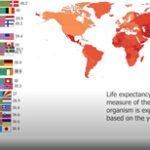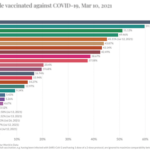Russia/Ukraine: Rising geopolitical risks and portfolio implications
Given the enormity of Russia's decision to invade Ukraine, this note provides a short update on the potential market implications.
Keeping in mind that the situation remains very fluid and uncertain these are early tentative assessments.
The escalation of the situation in Ukraine has already caused an increase in the equity risk premium and, in turn, a market drawdown. More volatility seems likely in the days and weeks ahead, especially given the severity of the sanctions imposed on Russia.
Sanctions that include significant restrictions on Russian access to the SWIFT system of international payment messaging, which will hamper Russia’s ability to earn export receipts and pay for imports. Also pivotal was the decision of several countries, including Germany and the U.S., to provide military equipment to Ukraine.
These sanctions pose the risk of disruption to Russia’s significant exports of gas, oil and agricultural commodities, which would only exacerbate current upward pressure on global inflation. There is also the growing risk of spill over from likely extreme movements in Russian financial markets, and a potential Russian sovereign debt default.
Longer-term outlook
Beyond further likely volatility over the nearer-term, our overall assessment is that the Russian-Ukraine crisis shouldn’t significantly disrupt the longer-term global economic and financial market outlook.
This is due to a number of factors including:
- the relatively small size of the Russian and Ukrainian economy, comprising 2% and 0.1% of global GDP respectively. Russia’s economy is roughly the size of Canada’s;
- the fact that global corporate earnings growth to date remains solid, and the global economy is continuing to recover from COVID restrictions, thanks to widespread take-up of vaccines and a less severe COVID variant;
- based upon past confrontations, it's the uncertainty leading up to conflict that has tended to do most damage to markets. Once the event itself happened, the earlier 'event risk' priced into markets has tended to dissipate somewhat as the uncertainty receded.
Bigger picture, we do not see the Russia-Ukraine conflict as ultimately overriding the main current global market concern: high inflation and tight labour markets in countries such as the United States, which requires its central bank to progressively raise interest rates this year from what are still near-zero levels. Equity valuations are coming under downward pressure as interest rates rise, but so far at least, earnings growth is holding up and should provide an offset.
A large element of these interest rate increases, moreover, is already priced into the market and further upside in long-term bond yields – which particularly affect the growth/technology sectors – should be limited. My base case is that U.S. 10-year bond yields will reach 2.25% in 2022, from recent highs of around 2% – but they have already lifted from around 0.5% since mid/late 2020.
Barring a U.S. recession, which still seems unlikely for at least the next year, a market correction of around 10-20% over coming months remains my base case, but not a lot more. In the U.S., the S&P 500 has already fallen 10%, though technology exposures – which are more sensitive to interest rates – have fallen somewhat more.
David Bassanese
Betashares Chief Economist
betashares.com.au



